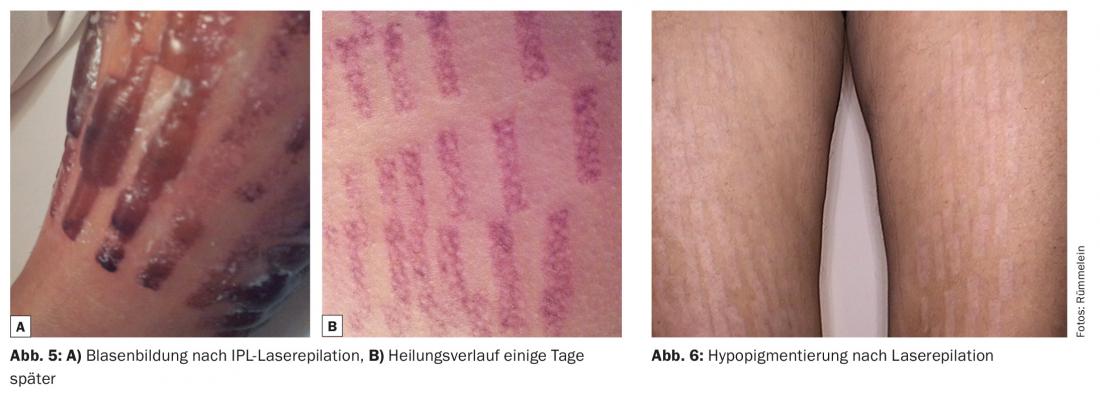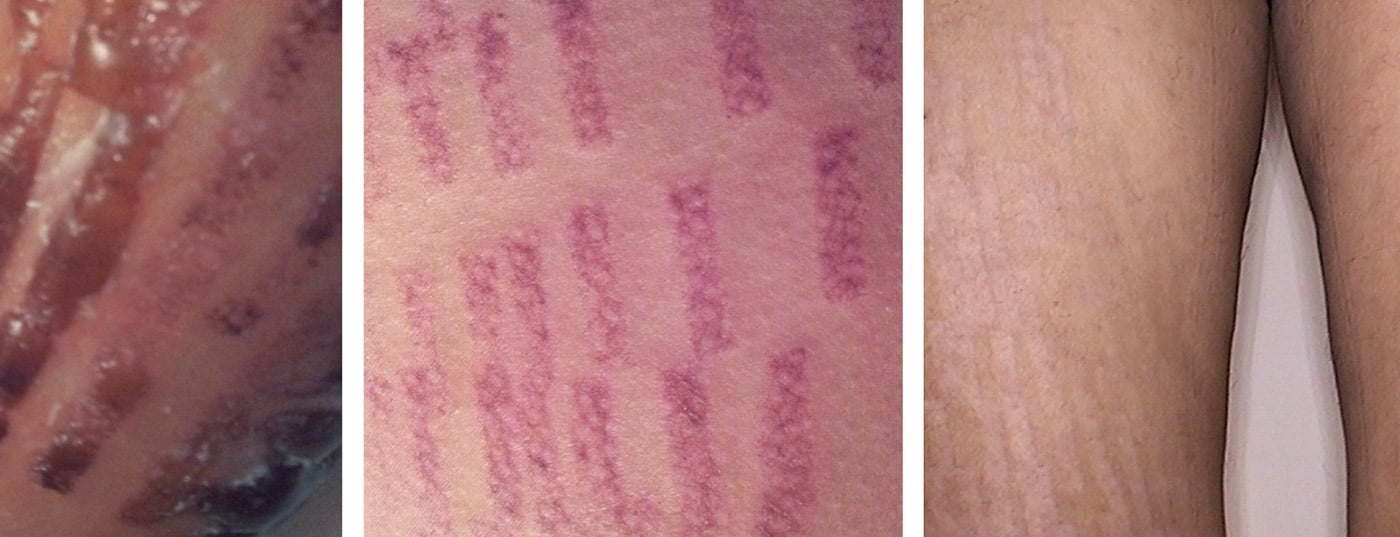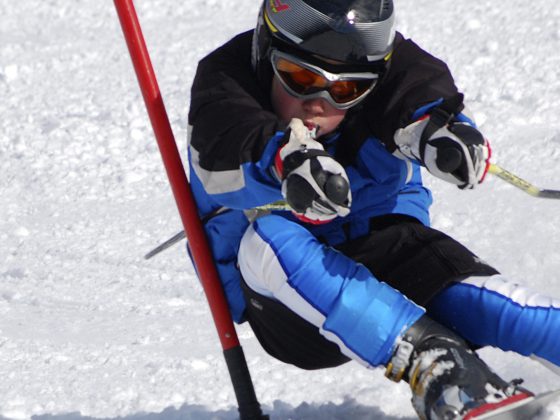Laser medicine is a serious addition to our field and has given us countless treatment options that we didn’t have before. It requires serious basic training and regular continuing education. Hypes are to be distinguished from innovations, flops from potent opportunities. Only the well-trained physician can differentiate here. The honest exchange and mutual assignment of patients among colleagues serves the best interests of our patients, because we can’t all buy every piece of equipment, even if the industry would like us to.
I think laser medicine is undergoing a transformation right now. Some colleagues rely entirely on laser technology, others leave this field completely for reasons of economy and probably also because the results achieved did not meet their expectations.
Modern laser devices are highly specialized and each is only suitable for very specific indications and problem solutions. Despite already versatile platforms, one device is still not enough. Young colleagues need to calculate an investment in lasers well. The investment is very high compared to conventional therapies. The competition from laser-using laymen, e.g. tattoo artists or beauticians, is great and depresses the price. Customers are critical and compare offers.
There are now many good books and technical information about lasers. Therefore, the questions I am asked are mostly not of a technical nature, but rather relate to other determining factors on purchase decision aids. Therefore, after 18 years of experience with laser medicine and after founding practices in Germany and Switzerland, I would like to share a few personal assessments with you.
When is it worth investing in lasers and when is it not?
Basically, every specialist should consider a laser as a tool for diagnoses and indications that really belong to his specialty, i.e. with which he is well acquainted (also with their alternative methods of treatment).
Dermatology offers the following fields of treatment:
- Undesirable skin elevations such as seborrheic keratoses, fibromas, xanthelasmas, and warts
- Pigmented skin lesions (without nevus cell nevi), e.g. tattoos, melasma, lentigines, flat seborrheic keratoses
- Vascular treatments, e.g. telangiectasia, spider veins, nevus flammeus, venous lake
- Permanent hair reduction (for medical or aesthetic reasons) for pilonidal sinus, acne inversa, pili recurvati
- All scars (e.g. acne scars, accident scars, surgical scars) and striae distensae
- Skin tightening.
Essentially, you should consider whether you want to use a laser only occasionally for certain indications or whether laser medicine should become more of a focus of practice. In the first case, an erbium laser and a KTP laser can cover about 60% of the indications. The purchase of a combined platform is tempting, as it offers the beginner a wide range of application possibilities, but I prefer a well-selected portfolio of individual devices instead. If a system is well established, the physician will define certain delegable treatments. Double bookings can now occur in the administration or the device can be blocked when it would be needed by the physician.
If a combination unit is defective, several treatments are always cancelled at the same time and the financial damage is considerable. Each device should ideally be in its own room, thus avoiding room collisions, parallel use is possible, administration is simplified and preparation and follow-up of patients can be carried out with less time pressure.
be
Unwanted skin elevations
Skin elevations are discussed at almost every skin cancer screening. If the question “Is it dangerous?” is answered with a “No”, the patient usually asks for a removal. Of course, these aesthetically indicated removals are possible with various methods. Depending on the diagnosis, curettage, shaving, scissor cutting, cryotherapy or excision are used. An ablative CO2-laser or an erbium laser are thus not absolutely necessary for the treatment because of the multitude of other options, but they are usually the means of first choice. For xanthelasma, ablative laser is undoubtedly the only good therapeutic option (Fig. 1).

Therefore, if one decides against an ablative laser, one should, in the spirit of “best practice,” refer one’s patients to a colleague who has this equipment.
Pigmented skin lesions
Here, the first choice is a so-called Q-switched laser, which again confronts us with a problem. Lentigines can be treated excellently with a Q-switched Ruby laser or a Nd:YAG laser converted to the wavelength 532 nm. For black tattoos and melasma, you need a Q-switched Nd:YAG laser. Red tattoos are best removed by a Nd:YAG laser with a wavelength of 532 nm, while turquoise and green require a picosecond laser, which is only available in isolated cases due to the high purchase price (Figs. 2 and 3).

Larger laser practices usually have more than one laser technology.
Vascular treatments
A classic entry-level model is the KTP laser (potassium titanyl phosphate), which can be used to treat fine vessels, especially in the facial area, sufficiently. For larger vessels such as violet spider veins or venous lake, however, this is not sufficient and a long-pulsed Nd:YAG laser is needed, which must be learned carefully, as it can also cause considerable non-specific tissue damage with subsequent scarring.
For two-dimensional erythema as in rosacea, but also for congenital anomalies such as nevus flammeus, an IPL device or a dye laser can provide good service (here, too, however, there is a risk of scarring if used improperly, Fig. 4).

So if you want to cover the entire field of vascular treatments, you need three different devices.
Permanent hair reduction
Although this may sound strange to you, I recommend entering this indication field last. On the one hand, there are now a variety of home devices, and on the other hand, this treatment is very often offered by beauty salons. The price pressure is considerable and the treatment is also time-consuming. Either one carries out these treatments oneself or one needs a qualified employee, who must also be well paid. I would strongly advise against laser epilation by non-qualified personnel, since burns show up only after a delay, but can cause you, the physician, all the more trouble for a longer period of time (Fig. 5 and 6).

Alexandrite laser is the golden standard, but unfortunately not suitable for dark skin types and tanned skin. Nd:YAG lasers or diode lasers are suitable for this purpose, if necessary also in combination with radio frequency. Another option is IPL devices. However, these are very common among beauticians, are particularly time-consuming and cannot exactly be described as having few side effects.
Scars
In the case of scars, this is an excellent indication, not least because patients with scars are normally extremely grateful for any improvement. With surgeons and general practitioners, you can build a good referral base for scar patients. The accident insurance companies and in some cases also the health insurance companies often grant cost credits upon request. Scars always require several treatments. Even though you see improvements very quickly, patients like to come back up to ten times, knowing that more improvements are possible.
Depending on the skin and scar type, one or the other device may achieve better results. A fractionalCO2 laser is a “must”, fractional radiofrequency systems or microneedling with radiofrequency can enrich the treatment spectrum (Fig. 7).

Skin tightening
The decisive factor here is, above all, the nature of the physician. You should ask yourself whether you like to sell or not. This is because skin tightening is a purely self-pay service. There are a variety of methods for this, some of which achieve very good results. Nevertheless, one must be aware: There will never be a good result for a dysmorphophobic patient! And anyone who offers skin tightening, so-called anti-aging, will certainly have to deal with some dysmorphophobic patients. You should be prepared for this. Skin tightening methods using fractional laser systems can be combined particularly well with botulinum toxin injections and filler treatments. This achieves better, more natural and longer-lasting results, which in turn helps cement a practice’s reputation. If you want to enter this field, you need a particularly comprehensive education.
In general, a clear pricing policy is important. To do this, I recommend studying the market well and exchanging ideas with colleagues who are already experienced.
Concluding remarks
In conclusion, of the laser systems on the market, the fractionalCO2 laser is the broadest and best studied. Data on the newer apparative methods such as fractional radiofrequency, radiofrequency microneedling, or focused ultrasound are not nearly as comprehensive. A final recommendation is therefore not possible for me.
This is of course only a personal view, which in no way claims to be neutral. While it is based on experience with about thirty different laser systems, it remains an individual consideration.
DERMATOLOGIE PRAXIS 2015; 25(4): 32-35











